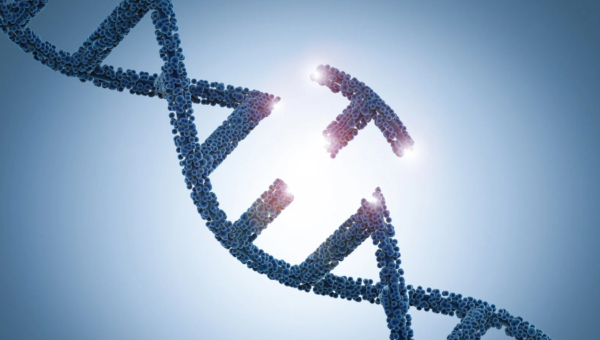
MRM Insights: One-and-done gene therapeutics – Changing one base at a time

Dr. Raquel Cuella Martin
Every month, in the MRM Insights, a member of the MRM Network writes about stem cells and regenerative medicine from a different perspective. This month, Dr. Raquel Cuella Martin, Assistant Professor in Functional Genomics at the McGill Genome Centre, discusses the one-and-done gene therapeutics.
One-and-done gene therapeutics – Changing one base at a time
In 2013, the CRISPR/Cas9 technology was first used to engineer the human genome. More than ten years later, I am still amazed to see where this technology can take us. Today, base editing takes the spotlight, aided by a slight bias from this author.
Base editors are the result of elegant protein engineering. Fuse a nickase Cas9 with cytidine and adenosine deaminases and get C-to-T, A-to-G and C-to-G base substitutions in the genomic location where the single guide (sg)RNA takes it (1-5). On the plus side, base editors will insert mutations with high efficiency, even in diploid cells. And no more toxic DNA breaks caused by Cas9. On the downside, off-target mutations are still there, in both DNA and RNA.
If the CRISPR/Cas9 technology already created turmoil in the gene therapy field, base editors go a step beyond. Is it possible to simply correct disease-causing mutations in humans? Can we engineer a point mutation and durably revert disease phenotypes in patients with genetic disorders?
In 2021, we witnessed preclinical success in using base editing screens for the treatment of familial hypercholesterolemia (6,7). The authors targeted PCSK9, a gene which regulates the turnover of the low-density lipoprotein (LDL) cholesterol receptor, and hence, LDL cholesterol uptake. The rationale: Genetic studies had revealed that human knockouts of PCSK9 presented quasi-negligible levels of LDL cholesterol in the blood and were protected from cardiovascular disease (8). Intravenous injection of lipid nanoparticles carrying an adenosine base editor and a sgRNA targeting the splice site of PCSK9’s exon 1 resulted in editing efficiencies of 70% in the mouse liver (6,7). In cynomolgus monkeys, 63% editing efficiency was observed in the liver, with associated reductions of 81 and 65% in PCSK9 and LDL cholesterol levels in blood, respectively (6). In the initial study, monkeys were monitored for 8 months, with a stable reduction of PCSK9 and LDL cholesterol (6). Longer monitoring kept reporting stable reductions at day 476 with no germline transmission of the somatic edit (9).
Only a few weeks ago, base editing was applied to another genetic disorder, spinal muscular atrophy (SMA). SMA is the leading cause of infant mortality, caused by homozygous loss of the SMN1 gene. In the absence of SMN1, its almost identical counterpart SMN2 can partially compensate for the loss. That ‘almost identical’ is caused by a mutation on the splice site of exon 6 of SMN2 resulting in loss of exon 7 and reduced protein stability. Treatments for SMA are available based on two principles: i) gene replacement or ii) favouring the inclusion of the exon7 on the SNM2 gene. Although effective, these (incredibly!) costly therapeutics require repeated administration throughout the patient’s lifetime.
Is a one-and-done treatment possible for SMA patients? The Kleinstiver and Liu labs offered some insights here (10,11).
Both groups focused on ‘correcting’ the SNM2 gene as a strategy to restore a proficient SMN transcript, regardless of the SMN1 mutation carried by the patient. The adenosine base editor and the sgRNA targeting the SNM2 splice site mutation were packaged in an adenovirus system (AAV9) that specifically infects neurons. Intracerebroventricular injection of the base editing drug into an SMA mouse model resulted in efficient mutation correction of up to 37% of SNM2 alleles in spinal motor neurons (11). Disease phenotypes in spinal motor neurons were also alleviated and the lifespan of SMA extended by ~33%. Encouraging results despite a major caveat: the intrinsically slow-acting mechanism of base editing was colliding with the reduced therapeutic window for SMA treatment in mice. To circumvent this, the Liu lab proposed the combination of the base editor drug with the FDA-approved antisense oligonucleotide nusinersen. The rationale: the fast action of nusinersen will quickly increase SMN levels and extend the window for the base editor to insert the permanent modification. Jackpot! Outcomes were dramatically improved. The lifespan of edited mice increased by 10-fold, and they were equivalent to healthy mice across 33 parameters of motor function (11).
These results bring closer the promise of precise, one-and-done therapeutics for genetic disorders. Phase I clinical trials of a base editing treatment for familial hypercholesterolemia are currently recruiting… I guess we will just have to wait and see!
References
1. Komor AC, Kim YB, Packer MS, Zuris JA, and Liu DR (2016). Programmable editing of a target base in genomic DNA without double-stranded DNA cleavage. Nature 533, 420-424.
2. Gaudelli NM, Komor AC, Rees HA, Packer MS, Badran AH, Bryson DI, et al. (2017). Programmable base editing of A•T to G•C in genomic DNA without DNA cleavage. Nature 551, 464-471.
3. Zhao D, Li J, Li S, Xin X, Hu M, Price MA, et al. (2021). Glycosylase base editors enable C-to-A and C-to-G base changes. Nat Biotechnol 39, 35-40.
4. Kurt IC, Zhou R, Iyer S, Garcia SP, Miller BR, Langner LM, et al. (2021). CRISPR C-to-G base editors for inducing targeted DNA transversions in human cells. Nat Biotechnol 39, 41-46.
5. Koblan LW, Arbab M, Shen MW, Hussmann JA, Anzalone AV, Doman, JL et al. (2021). Efficient C•G-to-G•C base editors developed using CRISPRi screens, target-library analysis, and machine learning. Nat Biotechnol 39, 1414-1425.
6. Musunuru K, Chadwick AC, Mizoguchi T, Garcia SP, DeNizio JE, Reiss CW, et al. (2021). In vivo CRISPR base editing of PCSK9 durably lowers cholesterol in primates. Nature 593, 429-434.
7. Rothgangl T, Dennis MK, Lin PJC, Oka R, Witzigmann D, Villiger L, et al. (2021). In vivo adenine base editing of PCSK9 in macaques reduces LDL cholesterol levels. Nat Biotechnol 39, 949-957.
8. Cohen JC, Boerwinkle E, Mosley TH Jr, and Hobbs HH (2006). Sequence variations in PCSK9, low LDL, and protection against coronary heart disease. N Engl J Med 354, 1264-1272.
9. Lee RG, Mazzola AM, Braun MC, Platt C, Vafai SB, Kathiresan S, et al. (2023). Efficacy and Safety of an Investigational Single-Course CRISPR Base-Editing Therapy Targeting PCSK9 in Nonhuman Primate and Mouse Models. Circulation 147, 242-253.
10. Alves CRR, Ha LL, Yaworski R, Lazzarotto CR, Christie KA, Reilly A, et al. (2023). Base editing as a genetic treatment for spinal muscular atrophy. BioRxiv, 524978.
11. Arbab M, Matuszek Z, Kray KM, Du A, Newby GA, Blatnik AJ, et al. (2023). Base editing rescue of spinal muscular atrophy in cells and in mice. Science eadg6518. Epub ahead of print.
